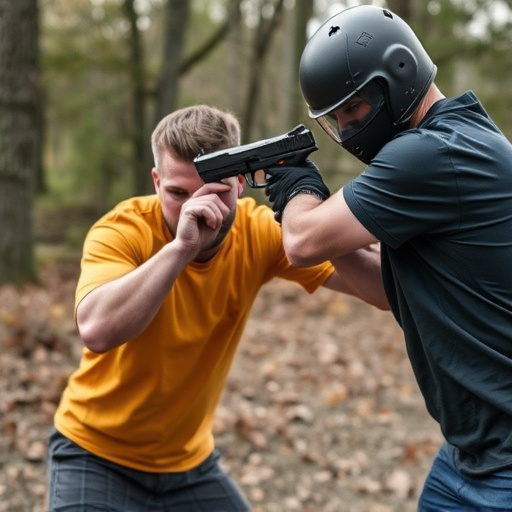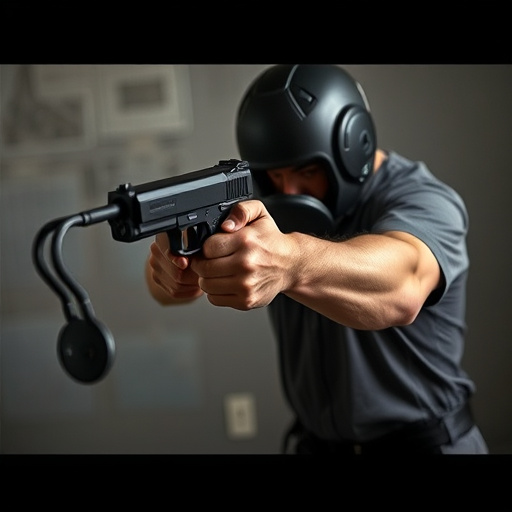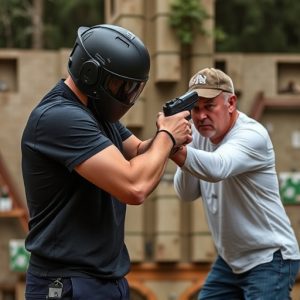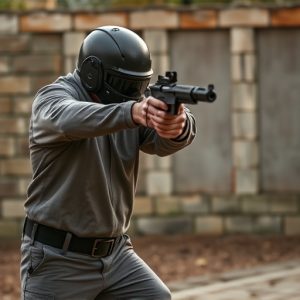Unveiling Shock Strategies: Compact Stun Guns with Flashlight Analysis
Compact stun guns with flashlight functionalities rely on optimized electrical current spread patter…….
Compact stun guns with flashlight functionalities rely on optimized electrical current spread patterns for effective shock delivery and consistent lighting. Engineers analyze conductor, insulator, and resistor interactions to enhance power distribution and safety features, ensuring reliable shocks while maintaining balanced light intensity and battery life. Strategic electrode placement and careful design considerations are key to maximizing stun effect and flashlight performance in these innovative personal defense tools. Safe handling practices, including protective gear, ventilation, inspection, and water avoidance, are essential due to high voltage and current operations.
Electrical current spread patterns play a pivotal role in understanding the effectiveness of stun devices, especially compact stun guns integrated with flashlights. This analysis delves into how current flows across targets, influenced by electrode design and placement. We explore the unique advantages of compact stun guns, focusing on their dual functionality: providing illumination and delivering powerful shocks. By examining shock distribution, we uncover best practices for safety and effectiveness in real-world applications.
- Understanding Electrical Current Spread Patterns
- The Role of Compact Stun Guns with Flashlights
- Analyzing Electrode Placement and Design
- Impact on Shock Distribution and Effectiveness
- Safety Considerations and Best Practices
Understanding Electrical Current Spread Patterns

Electrical current spread patterns are crucial in understanding how energy flows through different materials and devices, especially in compact stun guns with flashlight functionalities. These patterns reveal critical insights into the behavior of electricity when it encounters varying conductors, insulators, and resistors. By analyzing these spreads, engineers can optimize the design and performance of electrical systems, ensuring efficient power distribution and consistent output.
In the context of compact stun guns, understanding current spread is vital for achieving reliable and potent shocks while maintaining safe operating conditions. The flashlight component further complicates matters, as light emission requires precise current regulation to prevent damage to both the device and the user. Thus, meticulous pattern analysis enables manufacturers to strike a delicate balance between lighting intensity, battery life, and shock delivery, enhancing overall functionality and safety features of these innovative tools.
The Role of Compact Stun Guns with Flashlights

Compact stun guns with flashlights are transforming personal safety tools, offering a versatile and powerful defense option. These innovative devices combine the stoppower of a stun gun with the illumination of a flashlight, providing users with an added layer of security in low-light or dark environments. When analyzing the spread pattern of electrical current, these compact weapons prove their effectiveness. The concentrated beam of the stun gun disrupts muscle control, ensuring the user has time to escape or seek help. Simultaneously, the built-in flashlight illuminates potential threats, allowing for better assessment and decision-making in challenging conditions.
The integration of a flashlight into a stun gun design offers several advantages. It enables users to identify danger signs more easily, especially in unfamiliar surroundings or during unexpected encounters. Additionally, the light can act as a deterrent, temporarily blinding aggressors and creating an opportunity for the user to retreat safely. This dual functionality makes compact stun guns with flashlights a popular choice for individuals seeking personal protection in various settings, from outdoor adventures to urban exploration.
Analyzing Electrode Placement and Design

In the context of compact stun guns with flashlights, electrode placement and design are critical factors in understanding how electrical current spreads. These miniature devices pack a powerful punch, but their effectiveness relies on strategic electrode positioning. Each stun gun is designed with specific electrodes that deliver an electric shock, ensuring accurate and efficient energy transfer to the target. By analyzing the arrangement of these electrodes, users can optimize the device’s performance, especially in compact models where space is limited.
The design process involves careful consideration of factors like electrode size, shape, and spacing to enable optimal current flow. In a compact stun gun with a flashlight, for instance, engineers must integrate both functions seamlessly while maintaining electrical efficiency. Proper electrode placement ensures that the current spreads evenly across the contact point, maximizing the stun effect while also providing consistent lighting output from the flashlight.
Impact on Shock Distribution and Effectiveness

The design and functionality of compact stun guns with flashlights significantly influence how electrical current spreads and the overall effectiveness of the device. These compact weapons are engineered to deliver a powerful shock while remaining portable, making them popular choices for personal protection. The stun gun’s shape, material composition, and internal wiring play crucial roles in determining the intensity and distribution of the electric current.
When a compact stun gun is activated, the electrical current flows through its conductive components, rapidly spreading across the target area. This rapid dissemination ensures that the shock is distributed evenly, maximizing the disruption and immobilization effect. The efficiency of this process is particularly vital in self-defense scenarios, as it allows users to disable attackers quickly, providing a crucial window for escape or backup support.
Safety Considerations and Best Practices

When conducting electrical current spread pattern analysis, especially with compact stun guns that often incorporate a flashlight feature, safety should be the top priority. These devices operate at high voltages and currents, which can pose significant risks if not handled correctly. It’s crucial to always wear protective gear, including insulated gloves and eye protection, to prevent accidental shocks or electrical burns.
Best practices include ensuring proper ventilation during testing to minimize the risk of electrical fires or explosions, especially when dealing with compact stun guns that might have small, concentrated current paths. Keep a fire extinguisher nearby as a safety measure. Regularly inspect devices for any signs of damage or wear before use, and always follow manufacturer guidelines for safe operation and maintenance. This includes avoiding any contact with water or moisture to prevent electrical hazards.
Electrical current spread pattern analysis is crucial for understanding the effectiveness and safety of compact stun guns with flashlights. By examining electrode placement and design, we can optimize shock distribution and ensure optimal performance while adhering to safety best practices. The role of these innovative devices in personal safety cannot be overstated, especially when considering their compact size that combines lighting and defensive capabilities.


